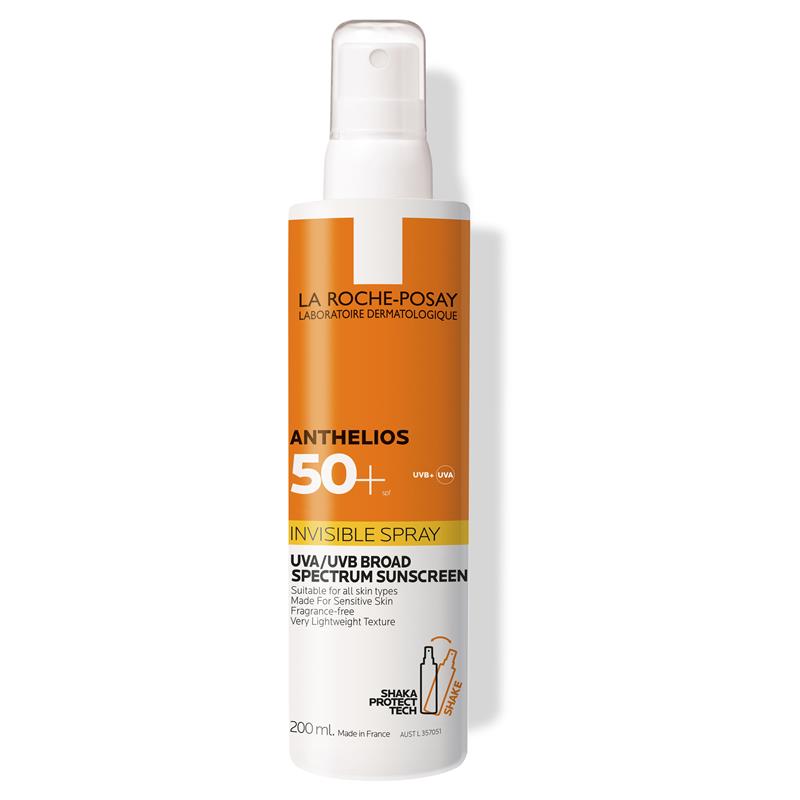
- POPSUGAR Australia
- Beauty
- The Aerosol Sunscreen Debate Doesn’t Mean You Need to Side-Step Spray-On Sunscreens
The Aerosol Sunscreen Debate Doesn’t Mean You Need to Side-Step Spray-On Sunscreens


We’ve partnered with La Roche Posay to answer all your questions about skincare, what ingredients will work best together, and how to protect your skin over the summer.
By now, we all know that sunscreen is the one essential skincare product.
Without it, not only do we increase our chances of developing skin cancer (of which Australia has the highest rate globally), but also UV-related signs of damage, like accelerated ageing and pigmentation of the skin. In short? It’s a no thank you from us.
So, if we’re doing the right thing by our skin and wearing sunscreen daily, it’s important to find a formula that not only feels good but is convenient to apply. This is why aerosol and spray-on formulas seem genius, after all, who doesn’t want to spritz on additional sun protection all day long? But they do raise a few questions – the most important being, are they really enough to prevent sun damage?
The short answer is yes, but there are a few things you should know first. Below, we’re going to unpack the aerosol sunscreen debate, how to use them, and one of the best-selling formulas on the market.
How Much Sunscreen Do We Need, Really?
Hannah English, a pharmaceutical scientist and skin expert tells POPSUGAR Australia that to be protected from the sun’s harmful rays, we should be using a teaspoon of sunscreen (5mL) per limb, a teaspoon for the front of the torso and a teaspoon for the back and then a half teaspoon for face neck and ears.
This equates to about 30 mL (a shot glass full) for the entire body, this can be reduced on any areas of the skin covered by UV rated protective clothing but is essential for areas exposed to sunlight.
As for reapplication, we should be reapplying every two hours, plus after swimming, sweating or towelling. “Our climate is punishing,” adds English.
Why Did the Aerosol SPF Drama Originate?
If you’ve scrolled through Instagram or TikTok you might have noticed skincare enthusiasts bashing aerosol formulas for their lack of efficacy. But why?
“People can forget to read the label and spray them directly onto their skin, sometimes when they’re already in the sun, and don’t rub it in,” explains English. “Half of it can end up in the air that way, especially in windy conditions and it’s hard to see if you’ve missed a spot. Then we get burnt.”
This is true. No one wants their sunscreen to blow away and end up feeling sore, red, and full of regret. But it doesn’t necessarily mean you have to bin them — it just means you need to be mindful of when and how you use them and follow the directions for use.
When Can a Spray-On Formula Be Useful?
A broad spectrum spray on SPF, like the La Roche-Posay Anthelios Invisible Spray SPF 50+, can be a great addition to your sun care routine for many reasons: it has a non-greasy finish, is straightforward to use, and makes reapplication a breeze.
“Many people have sensory issues with the sometimes filmy, greasy feeling of sunscreen lotions,” adds English. “Body sunscreens still have a way to go in terms of user experience, but spray sunscreens tend to be a more lightweight formula, meaning they are easy to apply and feel pleasant on the skin.”
Our Pick: La Roche-Posay Anthelios Invisible Spray SPF 50+
Sold on sprays as a complement to your existing sun care arsenal? Yep, us too. But you shouldn’t just reach for any old formula.
The La Roche-Posay Anthelios Invisible Spray SPF 50+ is broad spectrum, fragrance-free, and designed for the face and body. It’s been formulated with sensitive skin in mind, is non-comedogenic and has an invisible finish that’s comfy to wear all day.
The spray nozzle is a genius touch, dispensing the product so you can see where it’s going ensuring full coverage (i.e., onto your skin and not the bathroom tiles). English points out that you can even mist it into your hands first to make sure you are applying enough. Important too when applying to the face.
Finally, because it’s a spray and not an aerosol, you won’t have to dig around for it at the airport (holiday vacay, here we come). It’s our smart choice.

La Roche-Posay Anthelios Invisible Spray SPF 50+ ($39.95)
ALWAYS READ THE LABEL AND FOLLOW THE DIRECTIONS FOR USE:
Apply 20 minutes before sun exposure. Sunscreen is only one part of sun protection so wear
protective clothing and seek shade. Avoid prolonged sun exposure. Reapply every 2 hours and after swimming, towelling, and perspiring in accordance with directions.
A note on experts:
Hannah English is a content creator, influencer and pharmaceutical scientist who specialises in breaking down the science of skincare for a consumer audience. She is the author of Your Best Skin: The Science of Skincare, you can follow her on Instagram and TikTok.

